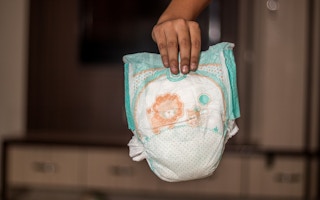When Morgan Poor gave birth to her son, she and her husband shopped around for the perfect diaper, hoping to find one that was both effective and environmentally friendly. They tried a few so-called “niche” brands, like Seventh Generation and Honest Company, which tout their green bona fides, but the diapers Poor liked best came from Pampers, a mainstream manufacturer with a line of more environmentally-friendly diapers.
“So, I’d be the anomaly in our research,” she said.
An anomaly indeed. Poor, an assistant professor of marketing at San Diego University, and her research colleagues, Stacy Wood and Stefanie Robinson from North Carolina State University, were curious to know how consumers respond to green products sold by mainstream brands. They largely turned out to be the opposite of Poor.
The researchers found that shoppers shunned green products produced by mainstream brands, believing them to be less effective than their regular non-green products. In other words, if parents were set on buying Pampers, they were going to buy regular Pampers. On the other hand, consumers adamant about buying strictly green products went for the niche brands, like Seventh Generation. Their work appears in the Journal of Advertising Research.
The fact that parents would prefer standard-issue Huggies, as opposed to the green version, may reflect years of Madison Avenue ad copy promoting the wonders of chemistry. “What makes a product ‘green’ is often that it has more natural, earth-friendly ingredients or materials,” Poor said. “Over the decades, marketers have been selling us on the effectiveness of chemicals, so I believe the perception or misperception is actually due to this conditioning.”
“
Often, green products will lead up with the focus on sustainability and that it is green, but that says nothing about the effectiveness of the product, which is what people really want.
Sonya Grier, professor of marketing, American University’s Kogod School of Business
At the same time, the study also suggests that there still are many shoppers — increasingly aware of the dangers of climate change and pollution — who want to buy greener products.
“It’s wonderful that consumers are starting to care about and demand that companies develop and sell more environmentally-friendly products,” Poor said. “If we want the mainstream brands to continue to do this though, it’s important that they understand how to enter the space successfully. Our research suggests that the best strategy for these mainstream brands may be to avoid too loudly showcasing the green quality of their product lines and instead let that be a bonus that consumers learn about post-purchase.”
Sonya Grier, professor of marketing at American University’s Kogod School of Business, who did not take part in this study, agreed that big companies should tamp down the green branding, at least at first.
“Often, green products will lead up with the focus on sustainability and that it is green, but that says nothing about the effectiveness of the product, which is what people really want,” she said. “It’s like saying buy my food because it’s sustainable, without saying anything about the taste.”
To conduct their study, the researchers surveyed 565 consumers nationwide, asking them about three home pesticide brands currently on the market. These included a standard pesticide from a mainstream brand, a green product from a mainstream brand, and a totally green niche competitor. The results also showed that consumers geared toward buying green preferred the niche brand over the mainstream brand with the environmentally-friendly features. The brands were not identified in the study.
Another factor to take into account is price, the scientists said. Green products often cost more than mainstream products, so “it may not always be feasible to buy everything green that consumers may ideally want,” Robinson said.
Poor pointed out, however, that many people also believe that “higher price equates to higher quality, so in that regard, one would think that higher priced green products might be perceived as more effective,” Poor said.
For Poor and her husband, moving to California — and then having a baby — prompted them to make a more concerted effort to go green. “It seems like you see organic, sustainable and environmentally-friendly products being talked about a lot more here,” she said.
“They also seem to be more easily accessible,” she added. “Then, when my husband and I began talking about starting a family, we made a major move to clean up the products we were using, including cleaning supplies, beauty products, and even our pest services.”
Poor says that in her experience, green products tend to work just as well as the standard non-green mainstream equivalents — which means manufacturers could have an opportunity to improve their bottom lines and the environment by fine-tuning how they present green products to consumers.
This story was published with permission from Nexus Media.










